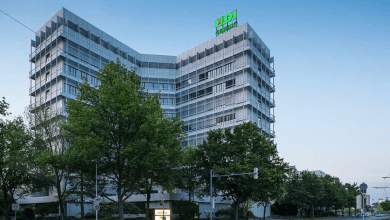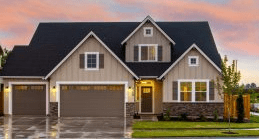Mission Possible: Top 3 Carrier Innovations in P&C to Restabilize Homeowners Insurance
This post is part of a series sponsored by AgentSync.
As the property and casualty market struggles to find its equilibrium, carriers and reinsurers are retooling their approach to risk and the market. As a Floridian myself, seeing reinsurers pull back capacity and raise their rates, followed by Florida insurers dialing back product offerings, limiting coverage, and pulling out of the market altogether – it’s personal.
The business of homeowners insurance can’t continue with business as usual in the coming years, as the industry needs to get creative around appropriately assessing risk at the individual property level. The future of P&C will likely belong to carriers that find innovative ways to meet consumers at a midpoint that aligns to affordable premiums, appropriate coverages, and individual property risk-mitigation investments to the perils they face at their location. Examples of risk-mitigation investments include concrete block home construction vs. a stick-built home, installing hurricane-grade doors and windows, and opting for hip roofs that are designed to minimize wind uplifting roofs during storms. As I said, as a Florida homeowner, it’s personal; homeowners need affordable insurance coverage, and carriers need profitable underwriting in their homeowners’ products to offset claim payouts.
After a decade of working in roles helping insurance carriers and reinsurers embrace digital transformations, innovate new product offerings, and find new industry use cases for Internet of Things (IoT) devices and tech-forward solutions, I’m confident the following trends are part of the way forward.
1. Parametric consumer homeowners coverage
As companies think about the addressable market, there’s currently a sizable population in risk-prone areas in Florida and around the country where consumer demand isn’t compatible with consumers’ ability to pay premiums. I think carriers can meet this challenge if we move away from the idea that the only solution for most consumers is the traditional HO-3 homeowners policy.
Instead, I’m interested in seeing what carriers discover who are testing consumer demand for parametric coverage as a supplemental policy or replacement to the HO-3 policy. In these cases, using parametric coverage may likely reduce the amount of traditional HO-3 policies. But they could, frankly, give consumers more options, meeting them where the peril is at their location address (not ZIP code) as this is the intersection of where risk appetite and demand meet. The parametric policy will pay out automatically when conditions, such as wind speed, rainfall meet or exceed pre-agreed thresholds.
We want national carriers back in the states they’re leaving for a healthy, competitive insurance marketplace. By offering parametric insurance as an add-on elective or separate policy like some municipalities do to fill risk needs that aren’t met by indemnity-based insurance, carriers can offer consumers insurance coverage options that could change the risk profile of a traditional HO-3 policy, which could be beneficial to both consumers and insurers.
Parametric coverage can also let carriers and reinsurers partner on product offerings that can create more competition in the marketplace, bring carriers back to markets they’ve left or stopped writing new business in, welcome new carriers into the market, and give homeowners some relief.
2. Novel device-based, sensor-based risk mitigation
In line with parametric adoption is the fairly novel use of device-based risk mitigation policies. I think we’re just beginning to see the application of today’s technology, where vendors in the marketplace offer different types of forecast and forensic weather data for perils like hail, lightning and wind data. With dual-pol radar technology and sensor data, weather reporting is better than ever, and specialty data can help carriers create more innovative product offerings.
More than innovating products, though, IoT devices can also help carriers and consumers split responsibility for risk mitigation. Sensors that measure water temperatures and water pressure can detect leaks and frozen pipes before damage occurs, letting a homeowner act to prevent needing to file a claim.
At a commercial level, carriers work with companies to place sensors and cameras all through manufacturing facilities and factories to detect changes in the environment that could degrade the equipment and affect the performance of the machinery or end-products. The technology is there and continues to get better and better. Making it more accessible could help carriers take advantage of better data to get creative with risk.
3. Individualized risk assessments
Device-based risk mitigation leads us to more individualized risk assessments as part of the path forward for more affordable insurance.
Auto insurers are already pursuing this with phone apps and car parts that judge your driving and assign you risk based on your habits and behaviors. But, particularly in states with high general risk to weather events, personalized risk assessments could be a driving force in mitigating both personal and systemic risk.
To look at Florida as an example, many real estate developers continue to build wood-frame homes and apartment complexes. From a construction standpoint, these homes are extremely vulnerable. It’s far more expensive to have concrete block housing construction, but those who do, know their homes can withstand severe weather events.
This also applies in areas prone to fire hazards. Colorado’s horrific Marshall Fires have left zones where carriers are reluctant to offer coverage. Yet, using ZIP code criteria to assess risk is outdated. There were homes and neighborhoods unaffected by the fires because homeowners associations and individuals took steps to de-risk their property.
Consider, for many homeowners, activities like landscaping and brush clearing seem very incidental to your property. But we know these are far from it. Clearing brush and planting shrubbery and trees away from your house are clearly connected to your home’s fire risk. As long as carriers price this risk based on ZIP code, these activities will seem like chores, something you can put off until “some other time.” But if they are priced into an individual’s property coverage, those elements of homeownership can move up into essential maintenance. These kinds of changes decrease the risks for carriers and the costs for consumers, ultimately resulting in a more resilient market altogether.
Moving to the future
In addition to being a Strategic Account Executive at AgentSync, I own a home in Florida and maintain my real estate license there as well. So I’m very familiar with the increasing trend of homeowners who are choosing to self-insure.
But even this only gives a select group of people options to offset risk. For most people, this effectively means taking on uncapped, unmitigated risk. Across the industry, there’s growing concern that consumer uninsured and underinsurance rates will worsen not only in Florida but nationwide. By giving consumers more personalized homeowners insurance options that align risk exposures at property location with premium cost, carriers will be better positioned to expand their policyholder base while limiting risks for themselves and their customers.
Topics
Florida
Carriers
InsurTech
Homeowners
Property Casualty



